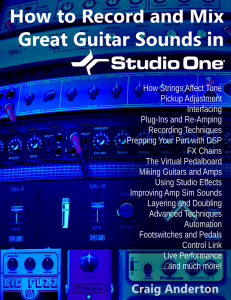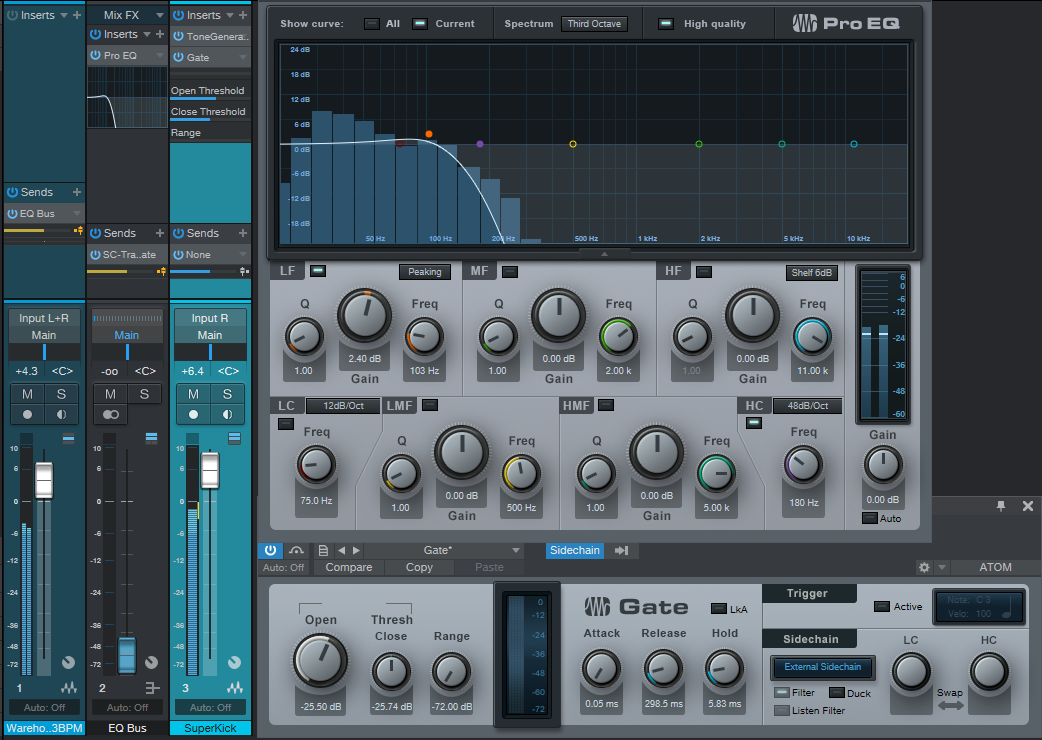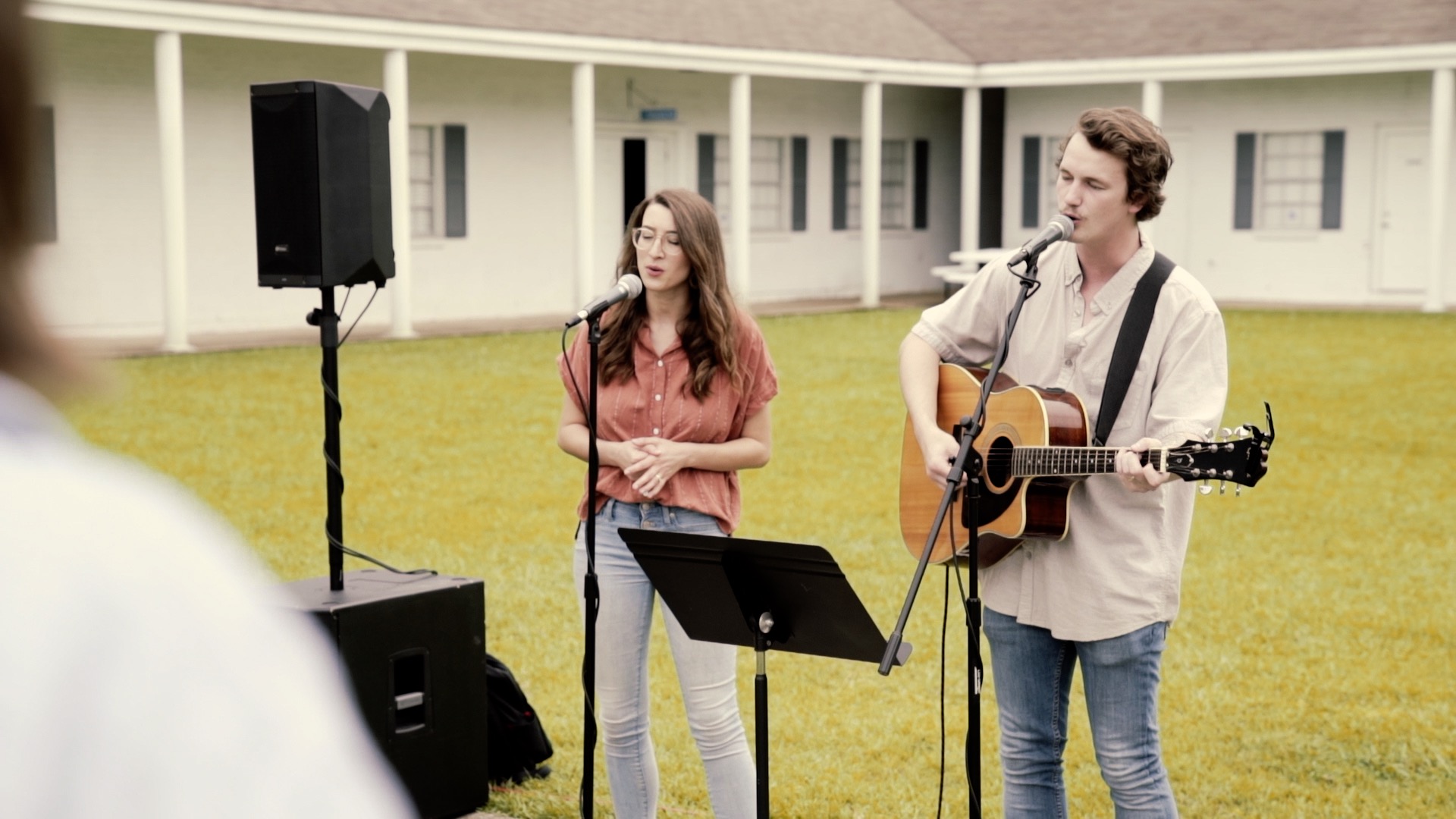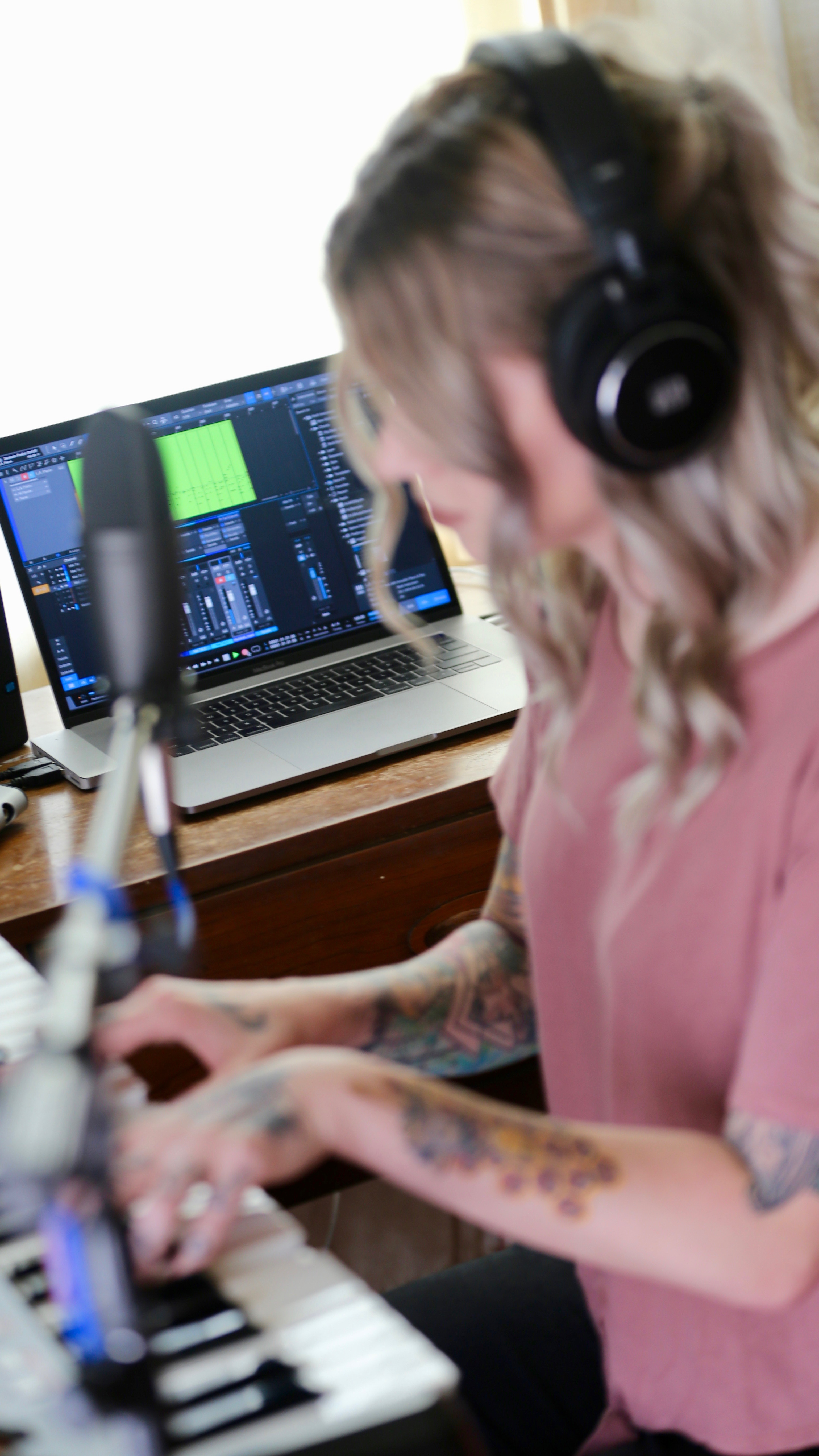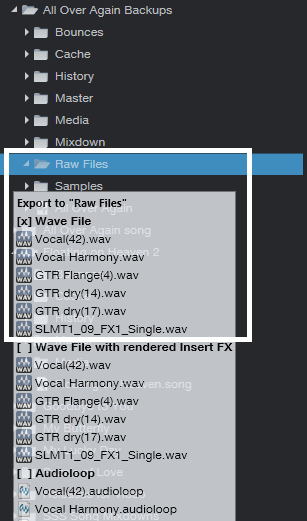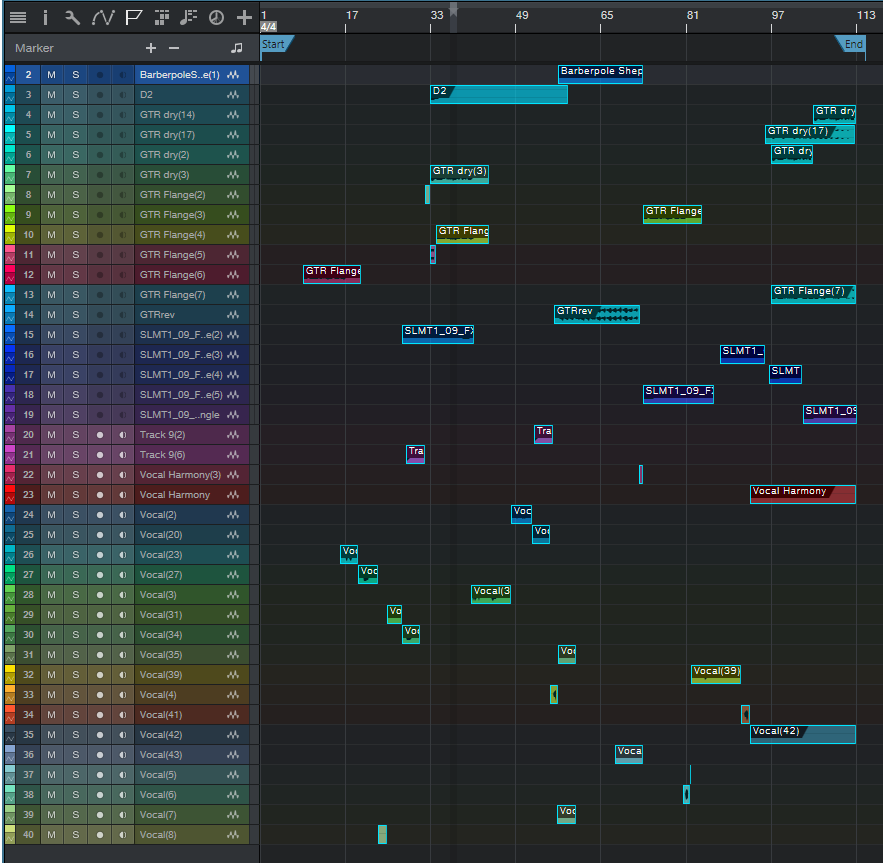Craig Anderton’s Big Book Round-Up
If you’ve spent a couple of spare evenings at home poking around the web for tips on music and audio production, it’s really very likely that you’ve run into some posts, articles, or comments from Craig Anderton. In fact, you may have had to update your search criteria to sort by “most recent,” because it’s fairly common for Google to show you some Craig Anderton posts from the dawn of the internet age, which—while cool—may not be particularly full of insight on Studio One version 4.
Fact is Craig is our industry’s most acclaimed writers, and he’s spoken about Studio One in-person at more events than I can count, and is of course responsible for the Friday Tips section of this very blog. In short, Craig’s contributions to the success and proliferation of Studio One can’t really be counted.
But his Studio One books? Those can be counted. There are five.
We wanted to take a minute to thank Craig for all of his hard work, broadly-reaching creative output, and continued support of PreSonus and Studio One. Let’s take a closer look at what he’s got over at shop.presonus.com. Chances are one or more of these will prove valuable to you and your process. Note that these are eBooks, not hardcover books, and will be downloaded as PDFs.
How to Record and Mix Great Guitar Sounds in Studio One
Essential reading for anyone who records guitars in Studio One, this definitive book covers invaluable production and engineering techniques.
- 274-page, beautifully-illustrated eBook is the fifth book in this acclaimed series of how to get the absolute most out of Studio One
- Covers all aspects of recording and mixing guitar, from how to choose the right strings for a particular tone, to advanced techniques that bring out the best in amp modeling plug-ins
- Applicable to all genres, from acoustic folk to heavy metal
- Links from contents page to topics—find specific subjects quickly
- Find out how to use DSP, effects, real-time control, and much more
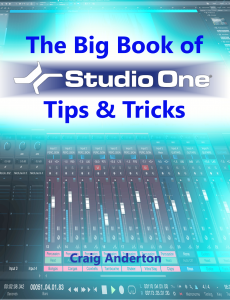 The Big Book of Studio One Tips and Tricks
The Big Book of Studio One Tips and Tricks
Consolidates, updates, expands on, and categorizes 130 tips from Craig’s popular “Friday Tip of the Week” blog posts that you probably have been checking out right here. Essential reading. This massive book includes tips on how solve problems, enhance sound quality, improve workflow, achieve greater expressiveness, create signature sounds, and much more.
- 289 pages with 278 four-color illustrations to help streamline the learning process
- Includes 39 free presets (28 Multipresets, 10 Mai Tai presets, 1 Presence XT preset) that support the tips
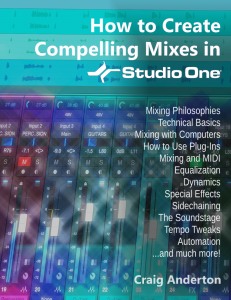 How to Create Compelling Mixes in Studio One
How to Create Compelling Mixes in Studio One
A comprehensive, practical, and above all inspiring guide on how to use Studio One’s sophisticated toolset to craft the perfect mix.
- 258-page eBook with over 180 four-color illustrations
- Downloadable PDF format, with links from the contents to book topics
- “Key Takeaways” section for each chapter summarizes chapter highlights
- “Tech Talk” sidebars do deep dives into selected topics
- Covers all aspects of mixing with Studio One
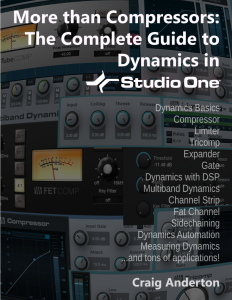 More than Compressors: The Complete Guide to Dynamics in Studio One
More than Compressors: The Complete Guide to Dynamics in Studio One
The ultimate guide to becoming an expert on Studio One’s dynamics processors and dynamics-oriented features.
- 258-page eBook with over 180 four-color illustrations
- Downloadable PDF format, with links from the contents to book topics
- “Key Takeaways” section for each chapter summarizes chapter highlights
- “Tech Talk” sidebars do deep dives into selected topics
- Covers all aspects of mixing with Studio One
 How to Record and Mix Great Vocals in Studio One
How to Record and Mix Great Vocals in Studio One
The ultimate guide to capturing, producing, and mixing superb vocal performances in Studio One.
- Profusely illustrated, 121-page eBook
- Covers everything from microphones to the final mix
- Tips on creating compelling vocal performances
- Links from contents page to topics
- Filled with practical, real-world examples
SuperKick—Tune and Enhance Your Kick Drum
If you do hip-hop or EDM, you’re in the right place.
This tip turns wimpy kicks into superkicks, using a different technique compared to drum replacement (see the Friday Tip for February 9, 2018). Listen to the audio example, and you’ll hear why this is cool.
Audio Example: The second four measures add the SuperKick effect to the loop in the first four measures. The added kick is 40 Hz…so don’t expect to hear anything on laptop speakers!
The basic concept is to add another track with a low-frequency sine wave, tuned to your pitch of choice. This can be a WAV file, but this example uses the highly-underrated, and extremely useful, Tone Generator plug-in set to a floor-shaking 40 Hz sine wave. A Bus “listens” to the loop, and uses EQ to filter out everything except the kick; you don’t hear this audio, but it gates the Tone Generator’s sine wave so that it tracks the kick. Fig. 1 shows the setup.
Figure 1: Setup to tune and enhance the kick in an existing loop.
- Track 1 is your drum loop; the audio example uses the Warehouse Tech Musicloop included in Studio One. Insert a pre-fader Send that goes to a Bus (named “EQ Bus” in this example). The reason for a pre-fader send is you’ll want to turn the Track fader down when tweaking the EQ and Gate responses covered later.
- Insert the Pro EQ into the EQ Bus. Tweak the response to filter out everything but the kick. The High Cut’s 48 dB/octave slope will probably do the job, although if there’s a lot of other bass action (like floor toms or bass) you may need to add an additional Peaking stage. Zero in on the kick’s lowest audible frequency, and apply a narrow boost.
- Add a Track, and insert the Tone Generator. Turn it on, then set it to produce a constant, low-frequency sine wave. Follow the tone Generator with a Gate.
- Add a pre-fader send from the EQ Bus to the Gate’s sidechain.
- To produce the most reliable triggering, the Gate settings and the Send level going to the Gate’s sidechain are crucial. Set the Threshold Close just slightly lower than the Open setting. Release determines how long the kick will last; 5 to 10 ms of hold minimizes “chattering.” Start by setting the Open and Threshold controls as shown, and adjust the Send to the sidechain for the most reliable triggering. If the kick tone doesn’t trigger, even with the Send to the sidechain turned up, lower the Open and Threshold close controls. If the kick tone stays on all the time, lower the Send level.
With the loop fader down so you’re not distracted, play with the Tone Generator frequency, EQ frequency to isolate the kick sound, and Gate settings until there’s reliable kick triggering. How you set the gate provides various options: extend the Release for a “hum drum” effect, or for more expressiveness, automate the release time. Increasing the Hold time alters the character as well.=
And after everything is set up…stand back while the floors shake!
PreSonus Solution: How to have a Worship Service in the Midst of Covid-19
When making ministry decisions, it’s important to ask yourself questions beyond just budgetary concerns.
Ask yourself and your team things like:
- “How will this help?”
- “What am I/we doing to be a good steward of the equipment, money, resources, and manpower given to me/us?”
- “What is the best use of those resources?”
As countries and cities around the globe slowly ease shelter-in-place orders, it’s vital to understand that even as we can begin to open the doors to our houses of worship, members of our congregation and newcomers as well may not feel comfortable coming together in confined spaces. With that said, many houses of worship are turning to outdoor services as a viable, serious, stand-alone option during this pleasant summer season as an easy, safe, and affordable alternative to reduced indoor occupancy.
Thankfully, you can easily put the pieces into place to accommodate an outdoor service… you might even have most of what you need already. PreSonus offers systems that are affordable, expandable, easy to use, and best of all, great-sounding. Find out what thousands of outdoor venues already know – PreSonus has a solution to fit your needs, regardless of budget, size, or skill level. With a three-year warranty on our mixers and an amazing six-year warranty on our speaker systems, you’ll have the peace of mind about your equipment that your people will have about your concerns for their well-being.
Learn more about the PreSonus Air Loudspeakers here: https://www.presonus.com/products/AIR-Loudspeakers
Find a StudioLive Series III Rack Mixer that’s right for you here: https://www.presonus.com/products/StudioLive-Series-III-Rack-Mixers
WATCH more here:
Studio One 4.6.2 is here

Here’s the complete change log:
New features and improvements:
- Improved ARA chord integration (Melodyne 5 compatibility)
- Added Quantum 2626 Device Template
- [Ampire] Audible pop on instantiation
- [Ampire] Loud click when switching thru Wah models
- [Melodyne] Crash when using “Copy Song Data to Note Assignment”
- [Presence XT] Sample start modulation shifts loop start as well
- [Windows] Slow redraw moving less than 51 items
- [Windows] Crash on duplicating / moving / replacing arranger sections
- [Windows] Fat Channel Plug-ins not working on certain systems
- Multi Instruments w/ NoteFX missing Fader/Inserts when recalled
- Pattern Part “Variations” are not recalled correctly
- Automation not responding on scroll wheel in Pattern Melodic Mode
- Menu item “Assign in ascending order” should not appear pipeline’s port menus
- Redraw problems in Scratchpad timeline
- Potential crash on playback when an audio event has an invalid length or offset
- “Tab to Transients” doesn’t work in .multitrack files
- VST2 plugins do not report key switches
The De-Stresser FX Chain
Feeling a little bit stressed?
I’m not surprised. Or do you ever have one of those days? Of course you do! Wouldn’t it be great to go down to the beach, listen to the waves for a while, and chill to those soothing sounds? The only problem for me is that going to the beach would involve a 7-hour drive.
Hence the De-Stresser FX Chain, which doesn’t sound exactly like the ocean—but emulates its desirable sonic effects. If you’re already stressed out, then you probably don’t want to take the time to assemble this chain, so feel free to go to the download link. Load the FX Chain into a channel, but note that you must enable input monitoring, because the sound source is the plug-in Tone Generator’s white noise option.
About the FX Chain
Figure 1: Effects used to create the De-Stresser’s virtual ocean.
Fig. 1 shows the FX Chain’s “block diagram.” The Splitter adds variety to the overall sound by feeding dual asynchronous “waves,” as generated by the X-Trems (set for tremolo mode). The X-Trem LFO’s lowest rate is 0.10 Hz; this should be slow enough, but for even slower waves, you can sync to tempo with a long note value, and set a really slow tempo.
Waves also have a little filtering as they break on the beach, which the Autofilters provide. The Pro EQs tailor the low- and high-frequency content to alter the waves’ apparent size and distance.
And of course, there’s the ever-popular Binaural Pan at the end. This helps create a more realistic stereo image when listening on headphones.
Macro Controls
Figure 2: The Macro Controls panel.
Regarding the Macro Controls panel (Fig. 2), the two Timbre controls alter the filter type for the two Autofilters. This provides additional variety, so choose whichever filter type combination you prefer. Crest alters the X-Trem depth, so higher values increase the difference between the waves’ peaks and troughs.
The Sci-Fi Ocean control adds resonance to the filtering. This isn’t designed to enhance the realism, but it’s kinda fun. Another subtle sci-fi sound involves setting the two Timbre controls to the Comb response.
As you move further away from real waves, the sound has fewer high frequencies. So, Distance controls the Pro EQ HC (High Cut) filters. Similarly, Wave Size controls the LC filter, because bigger waves have more of a low-frequency component. The Calmer control varies the Autofilter mix; turning it up gives smaller, shallower waves.
When you want to relax, this makes a soothing background. Put on good headphones, and you can lose yourself in the sound. It also makes a relaxing environmental sound when played over speakers at a low level. If your computer has Bluetooth, and you have Bluetooth speakers, try playing this in the background at the end of a long day.
Son of the Beach
This is just one example of the kind of environmental sounds and effects you can make with Studio One, so let me know if this type of tip interests you. I’ve also done rain, rocket engines, howling gales, the engine room of an interstellar cargo ship, cosmic thuds, various soundscapes, and even backgrounds designed to encourage theta and delta brain waves. I made the last one originally for a friend of mine whose children had a hard time going to sleep, and burned it to CD. When I asked what he thought, he said “no one has ever heard how it ends.” So I guess it worked! Chalk up another unusual Studio One application.
Download the De-Stresser FX Chain here!
Into the Archives, Part 2
After last week’s thrilling cliff-hanger about how to preserve your WAV files for future generations, let’s look at how to export all your stereo audio tracks and have them incorporate effects processing, automation, level, and panning. There are several ways to do this; although you can drag files into a Browser folder, and choose Wave File with rendered Insert FX, Studio One’s feature to save stems is much easier and also includes any effects added by effects in Bus and FX Channels. (We’ll also look at how to archive Instrument tracks.)
Saving as stems, where you choose individual Tracks or Channels, makes archiving processed files a breeze. For archiving, I choose Tracks because they’re what I’ll want to bring in for a remix. For example, if you’re using an instrument where multiple outputs feed into a stereo mix, Channels will save the mix, but Tracks will render the individual Instrument sounds into their own tracks.
When you export everything as stems, and bring them back into an empty Song, playback will sound exactly like the Song whose stems you exported. However, note that saving as stems does not necessarily preserve the Song’s organization; for example, tracks inside a folder track are rendered as individual tracks, not as part of a folder. I find this preferable anyway. Also, if you just drag the tracks back into an empty song, they’ll be alphabetized by track name. If this is an issue, number each track in the desired order before exporting.
SAVING STEMS
Select Song > Export Stems. Choose whether you want to export what’s represented by Tracks in the Arrange view, or by Channels in the Console. Again, for archiving, I recommend Tracks (Fig. 1).
Figure 1: The Song > Export Stems option is your friend.
If there’s anything you don’t want to save, uncheck the box next to the track name. Muted tracks are unchecked by default, but if you check them, the tracks are exported properly, and open unmuted.
Note that if an audio track is being sent to effects in a Bus or FX Channel, the exported track will include any added effects. Basically, you’ll save whatever you would hear with Solo enabled. In the Arrange view, each track is soloed as it’s rendered, so you can monitor the archiving progress as it occurs.
In Part 1 on saving raw WAV files, we noted that different approaches required different amounts of storage space. Saving stems requires the most amount of storage space because it saves all tracks from start to end (or whatever area in the timeline you select), even if a track-only has a few seconds of audio in it. However, this also means that the tracks are suitable for importing into programs that don’t recognize Broadcast WAV Files. Start all tracks from the beginning of a song, or at least from the same start point, and they’ll all sync up properly.
WHAT ABOUT THE MAIN FADER SETTINGS?
Note that the tracks will be affected by your Main fader inserts and processing, including any volume automation that creates a fadeout. I don’t use processors in the Main channel inserts, because I reserve any stereo 2-track processing for the Project page (hey, it’s Studio One—we have the technology!). I’d recommend bypassing any Main channel effects, because if you’re going to use archived files for a remix, you probably don’t want to be locked in to any processing applied to the stereo mix. I also prefer to disable automation Read for volume levels, because the fade may need to last longer with a remix. Keep your options open.
However, the Main fader is useful if you try to save the stems and get an indication that clipping has occurred. Reduce the Main fader by slightly more than the amount of clipping (e.g., if the warning says a file was 1 dB over, lower the Main channel fader by -1.1 dB). Another option would be to isolate the track(s) causing the clipping and reduce their levels; but reducing the Main channel fader maintains the proportional level of the mixed tracks.
SAVING INSTRUMENT AUDIO
Saving an Instrument track as a stem automatically renders it into audio. While that’s very convenient, you have other options.
When you drag an Instrument track’s Event to the Browser, you can save it as a Standard MIDI File (.mid) or as a Musicloop feature (press Shift to select between the two). Think of a Musicloop, a unique Studio One feature, as an Instrument track “channel strip”—when you bring it back into a project, it creates a Channel in the mixer, includes any Insert effects, zeroes the Channel fader, and incorporates the soft synth so you can edit it. Of course, if you’re collaborating with someone who doesn’t have the same soft synth or insert effects, they won’t be available (that’s another reason to stay in the Studio One ecosystem when collaborating if at all possible). But, you’ll still have the note events in a track.
There are three cautions when exporting Instrument track Parts as Musicloops or MIDI files.
- The Instrument track Parts are exported as MIDI files, which aren’t (yet) time-stamped similarly to Broadcast WAV Files. Therefore, the first event starts at the song’s beginning, regardless of where it occurs in the Song.
- Mutes aren’t recognized, so the file you bring back will include any muted notes.
- If there are multiple Instrument Parts in a track, you can drag them into the Browser and save them as a Musicloop. However, this will save a Musicloop for each Part. You can bring them all into the same track, one a time, but then you have to place them properly. If you bring them all in at once, they’ll create as many Channels/Tracks as there are Instrument Parts, and all Parts will start at the Song’s beginning…not very friendly.
The bottom line: Before exporting an Instrument track as a Musicloop or MIDI file, I recommend deleting any muted Parts, selecting all Instrument Parts by typing G to create a single Part, then extending the Part’s start to the Song’s beginning (Fig. 2).
Figure 2: The bottom track has prepped the top track to make it stem-export-friendly.
You can make sure that Instrument tracks import into the Song in the desired placement, by using Transform to Audio Track. As mentioned above, it’s best to delete unmuted sections, and type G to make multiple Parts into a single Part. However, you don’t need to extend the track’s beginning.
- Right-click in the track’s header, and select Transform to Audio Track.
- Drag the resulting audio file into the Browser. Now, the file is a standard Broadcast WAV Format file.
- When you drag the file into a Song, select it and choose Edit > Move to Origin to place it properly on the timeline.
However, unlike a Musicloop, this is only an audio file. When you bring it into a song, the resulting Channel does not include the soft synth, insert effects, etc.
Finally…it’s a good idea to save any presets used in your various virtual instruments into the same folder as your archived tracks. You never know…right?
And now you know how to archive your Songs. Next week, we’ll get back to Fun Stuff.
Band Together NOLA with StudioLive and Studio One!
PreSonus is honored to support all efforts by first responders and health care workers across the globe during this odd, hard time.
Last month, we had the opportunity to sponsor an event called “Band Together NOLA” for a virtual, live-streamed festival with more than 20 acts!
PJ Morton, Tank and the Bangas, Jon Cleary and more New Orleans’ musical heavy hitters played an online benefit festival to raise relief funds for the city’s musicians who have been out of work during the COVID-19 pandemic. So far, over $40,000 has been raised!
The Band Together virtual festival also featured Ivan Neville, Kermit Ruffins, Galactic’s Stanton Moore, Nigel Hall, Cupid, Dawn Richard, Water Seed, Johnny Sketch and the Dirty Notes, Sean Ardoin, Flow Tribe, Glen David Andrews, Hasizzle, Shane Theriot, Elizabeth Lyons, Fermin Ceballo, Bruce “Sunpie” Barnes, Kelly Love Jones, LeTrainiump, and Caren Green.
Our friend, Steve Himelfarb, was the engineer for six of the acts using a StudioLive 32 and Studio One Professional. We took some time to talk about his experience with the live stream and his career.
Before we get started here are four fun facts about Steve:
- He owns New Orleans Cake Cafe and Bakery off Chartres Street. He got his start in pastry selling them door to door–he literally baked the cakes and sold them by the slice to his neighbors. This grew into a cake shop in the French Quarter that ran for several years, and now a storefront cake shop, bakery, and restaurant.

- One of Steve’s first jobs was at Capitol Records in LA. His job was to digitize old tapes from the 40s and 50s. Nat King Cole, Sinatra, etc. This is where he recognized the magic of making music and fell in love with it.
- One of the first artists he worked with was none other than Shelia E! While they were working on her sound and style in the studio, Prince would call to check in on how she was doing.
- During the COVID-19 crisis, not only has Steve shared his audio engineering talent for this benefit, but he also donated over 250 meals a day for six weeks to multiple local hospital first responders. He along with his wife, Becky, and small staff prepared the meals and delivered the meals daily! What a guy!
Our interview with Steve follows.
Tell us about Band Together NOLA. How did it come to be? What was your role?
New Orleans is known for its tourism, food, and of course live music. The pandemic has put much of that to a halt which has left musicians our of work. The Band Together Online Benefit Concert took place on April 25 and helped New Orleans musicians whose livelihoods have been decimated by the COVID-19 pandemic. I am a part of multiple non-profits, and serving the community has always been something that I strive to do no matter where I live or what job I have. I was approached with the opportunity to participate with Lou Hill and Kermit Ruffins, it was a no-brainer. I was in!
Sounds like a huge undertaking. Did you know what you were getting into before you got started?
Yes and no. I had taken a break from the audio industry to focus on several other projects. Three years ago, my childhood friend, Tori Amos, had a show in New Orleans. From the stage, she says, “I’d like to thank the person responsible for me being here… Thank you Steve!” From that moment on, I knew I wanted to get back into recording and producing music and saying “Yes” to whatever opportunities came my way. Getting back into audio after a 20-year hiatus was like learning a whole new language that sounded familiar. Everything was the same but what changed was the technology. So, yes, it did seem like a huge undertaking but I was up and willing for the challenge.
We used a PreSonus StudioLive 32, multiple PX-1 mics and Studio One Professional, of course.
After watching the live stream, it looks like you recorded in multiple locations. How challenging was it recording in multiple locations?
We recorded six bands, all on the fly. Each band did a few songs, then we had a soundcheck for the next band all while doing our best to keep social distance guidelines. It was super hectic and everything was happening so fast. The onboard EQ and limiters on the 32 were AMAZING! We had no problem at all. This was very important and there was no room for a hiccup because everything was moving so fast. Once one band left, we had to wash down the stage and all the cables and mics to get ready for the next band to arrive. With the StudioLive 32, it was really a best-case scenario. Set up was easy, no distortion at all, the mixes sounded great.
What’s something you learned about live streaming?
With these harsh conditions and because everything is happening so fast, you have to be able to trust the gear you’re using. Be prepared, make sure the equipment is working, and use PreSonus.
Follow the New Orleans Cake Cafe and Bakery on Facebook!
Add Studio One to your workflow NOW for 30% off!
Notion iOS 2.5.2 Release Notes
Notion iOS 2.5.2 Maintenance Release
![]() An update is now available to the recent 2.5 release for Notion iOS, the best-selling notation app on iOS. This is a free update for Notion iOS owners that can be obtained by visiting Notion in the App Store on your device, or checking your available updates in the App Store.
An update is now available to the recent 2.5 release for Notion iOS, the best-selling notation app on iOS. This is a free update for Notion iOS owners that can be obtained by visiting Notion in the App Store on your device, or checking your available updates in the App Store.
All the changes are below – if you missed all the major news for v2.5 itself, check it out here.
And while you’re here, please join us at our new official Facebook user group: https://www.facebook.com/groups/PreSonusNotionUsers
All Fixes and Enhancements
- Issue entering notes with MIDI and MIDI Bluetooth instruments resolved
- Stability and performance improvements
- Context menus now display, after switching directly from Handwriting mode to the Handwriting zoom area and back
- On re-opening the app, the context menus now show in full the first time they are opened
- The ‘Continue’ button in the Export menu is now refreshed if the file type or export location is changed
- Lyrics can now be entered as expected on iOS13.4 and later when an external keyboard is connected
- Toolbar position fixed when in landscape on iPhone
- Background colour of Insert Barlines dialog fixed
- Language fixes for intervals in German
- Note that Soundcloud export is currently unavailable, as the API used is no longer supported by Soundcloud
- Minimum requirements: Apple iOS9 or higher (please note, Notion 2.5.x will be the final version to support iOS9 and iOS10)
PreSonus Fam Friday: Steve O’Brien
It’s another edition of PreSonus Fam Friday. This one comes to us from across the pond! Meet Steve O’Brien. Steve had 19 years of experience in MI retail with a particular focus on guitar related products and service and 17 years of experience in various event production roles including guitar technician, sound engineer, stage management and production management. He joined the PreSonus family over in the Ireland office as a Sales Executive. Get to know more about Steve here!
How long have you worked for PreSonus?
6 Months
What’s your official job title?
Sales Executive EMEA
What’s your favourite thing about your job? Why did you choose to work here?
I’ve been involved in the MI business for over 20 years. I was looking for a change from Retail and PreSonus had an opening. It seemed like a logical progression and I really wanted to stay in the industry. My favourite thing about PreSonus so far is the family atmosphere across the whole company. I was made to feel at home immediately like I’d known people I’d just met for years.
What was the first 8-track, cassette, CD or digital download you purchased?
Too young (ahem) for 8-Track, the first cassette was Bad by Michael Jackson, CD was The Heart of Saturday Night by Tom Waits and Download was Royal Blood’s first Album.
Who’s your go-to band or artist when you can’t decide on something to listen to?
Songs for the Deaf by QOTSA will never let you down. Still blows me away after all these years.
What’s your go-to Karaoke song?
I wouldn’t inflict my singing voice on anyone, not even myself in the shower.
Everyone has a side gig, what’s yours? OR when you’re not at PreSonus, what are you up to?
I’ve worked as a Backline Tech for about 15 years. I’m not a great musician and discovered I was better at the production side of things years ago. Currently off the road what with starting the new job and the coronavirus situation. Next up, hopefully, is a week on the road with Paul Brady later this year.
What instruments do you play?
I own some guitars
Tell us about a successful event you worked with PreSonus products. InfoComm, NAMM, Install somewhere:
This Paul Brady Tour will be using PreSonus StudioLive console and rack mixers as stage boxes. All over AVB network. I’m very much looking forward to seeing it in action.
Got any tips for working with Studio One?
Watch Gregor’s videos, I was completely new to it and found them great.
Is cereal soup? Why or why not?
Yes, Cereal counts as breakfast, lunch and dinner, always will.
What’s invisible but you wish people could see?
RF interference, I spent a lot of my retail days explaining this to guitarists, would have been much easier if it was visible, like cartoon stink lines or something.
What is something that everyone looks stupid doing?
Playing Electronic drums with headphones on, all the moves and faces with none of the noise.
What’s the strangest talent you have?
No matter where I am, I can always find the light switch in a dark room.
Follow Steve on Instagram as @dash_rickwood!
Safety First: Into the Archives, Part 1
I admit it. This is a truly boring topic.
You’re forgiven if you scoot down to something more interesting in this blog, but here’s the deal. I always archive finished projects, because remixing older projects can sometimes give them a second life—for example, I’ve stripped vocals from some songs, and remixed the instrument tracks for video backgrounds. Some have been remixed for other purposes. Some really ancient songs have been remixed because I know more than I did when I mixed them originally.
You can archive to hard drives, SSDs, the cloud…your choice. I prefer Blu-Ray optical media, because it’s more robust than conventional DVDs, has a rated minimum shelf life that will outlive me (at which point my kid can use the discs as coasters), and can be stored in a bank’s safe deposit box.
Superficially, archiving may seem to be the same process as collaboration, because you’re exporting tracks. However, collaboration often occurs during the recording process, and may involve exporting stems—a single track that contains a submix of drums, background vocals, or whatever. Archiving occurs after a song is complete, finished, and mixed. This matters for dealing with details like Event FX and instruments with multiple outputs. By the time I’m doing a final mix, Event FX (and Melodyne pitch correction, which is treated like an Event FX) have been rendered into a file, because I want those edits to be permanent. When collaborating, you might want to not render these edits, in case your collaborator has different ideas of how a track should sound.
With multiple-output instruments, while recording I’m fine with having all the outputs appear over a single channel—but for the final mix, I want each output to be on its own channel for individual processing. Similarly, I want tracks in a Folder track to be exposed and archived individually, not submixed.
So, it’s important to consider why you want to archive, and what you will need in the future. My biggest problem when trying to open really old songs is that some plug-ins may no longer be functional, due to OS incompatibilities, not being installed, being replaced with an update that doesn’t load automatically in place of an older version, different preset formats, etc. Another problem may be some glitch or issue in the audio itself, at which point I need a raw, unprocessed file for fixing the issue before re-applying the processing.
Because I can’t predict exactly what I’ll need years into the future, I have three different archives.
- Save the Studio One Song using Save To a New Folder. This saves only what’s actually used in the Song, not the extraneous files accumulated during the recording process, which will likely trim quite a bit of storage space compared to the original recording. This will be all that many people need, and hopefully, when you open the Song in the future everything will load and sound exactly as it did when it was finished. That means you won’t need to delve into the next two archive options.
- Save each track as a rendered audio WAV file with all the processing added by Studio One (effects, levels, and automation). I put these into a folder called Processed Tracks. Bringing them back into a Song sounds just like the original. They’re useful if in the future, the Song used third-party plug-ins that are no longer compatible or installed—you’ll still have the original track’s sound available.
- Save each track as a raw WAV file. These go into a folder named Raw Tracks. When remixing, you need raw tracks if different processing, fixes, or automation is required. You can also mix and match these with the rendered files—for example, maybe all the rendered virtual instruments are great, but you want different vocal processing.
Exporting Raw Wave Files
In this week’s tip, we’ll look at exporting raw WAV files. We’ll cover exporting files with processing (effects and automation), and exporting virtual instruments as audio, in next week’s tip.
Studio One’s audio files use the Broadcast Wave Format. This format time-stamps a file with its location on the timeline. When using any of the options we’ll describe, raw (unprocessed) audio files are saved with the following characteristics:
- No fader position or panning (files are pre-fader)
- No processing or automation
- Raw files incorporate Event envelopes (i.e., Event gain and fades) as well as any unrendered Event FX, including Melodyne
- Muted Events are saved as silence
Important: When you drag Broadcast WAV Files back into an empty Song, they won’t be aligned to their time stamp. You need to select them all, and choose Edit > Move to Origin.
The easiest way to save files is by dragging them into a Browser folder. When the files hover over the Browser folder (Fig. 1), select one of three options—Wave File, Wave File with rendered Insert FX, or Audioloop—by cycling through the three options with the QWERTY keyboard’s Shift key. We’ll be archiving raw WAV files, so choose Wave File for the options we’re covering.
Figure 1: The three file options available when dragging to a folder in the Browser are Wave File, Wave File with rendered Insert FX, or Audioloop.
As an example, Fig. 2 shows the basic Song we’ll be archiving. Note that there are multiple Events, and they’re non-contiguous—they’ve been split, muted, etc.
Figure 2: This shows the Events in the Song being archived, for comparison with how they look when saving, or reloading into an empty Song.
Option 1: Fast to prepare, takes up the least storage space, but is a hassle to re-load into an empty Song.
Select all the audio Events in your Song, and then drag them into the Browser’s Raw Tracks folder you created (or whatever you named it). The files take up minimal storage space, because nothing is saved that isn’t data in a Song. However, I don’t recommend this option, because when you drag the stored Events back into a Song, each Event ends up on its own track (Fig. 3). So if a Song has 60 different Events, you’ll have 60 tracks. It takes time to consolidate all the original track Events into their original tracks, and then delete the empty tracks that result from moving so many Events into individual tracks.
Figure 3: These files have all been moved to their origin, so they line up properly on the timeline. However, exporting all audio Events as WAV files makes it time-consuming to reconstruct a Song, especially if the tracks were named ambiguously.
Option 2: Takes more time to prepare, takes up more storage space, but is much easier to load into an empty Song.
- Select the Events in one audio track, and type Ctrl+B to join them together into a single Event in the track. If this causes clipping, you’ll need to reduce the Event gain by the amount that the level is over 0. Repeat this for the other audio tracks.
- Joining each track creates Events that start at the first Event’s start, and end at the last Event’s end. This uses more memory than Option 1 because if two Events are separated by an empty space of several measures, converting them into a single Event now includes the formerly empty space as track data (Fig. 4).
Figure 4: Before archiving, the Events in individual tracks have now been joined into a single track Event by selecting the track’s Events, and typing Ctrl+B.
- Select all the files, and drag them to your “Raw Tracks” folder with the Wave File option selected.
After dragging the files back into an empty Song, select all the files, and then after choosing Edit > Move to Origin, all the files will line up according to their time stamps, and look like they did in Fig. 4. Compare this to Fig. 3, where the individual, non-bounced Events were exported.
Option 3: Universal, fast to prepare, but takes up the most storage space.
When collaborating with someone whose program can’t read Broadcast WAV Files, all imported audio files need to start at the beginning of the Song so that after importing, they’re synched on the timeline. For collaborations it’s more likely you’ll export Stems, as we’ll cover in Part 2, but sometimes the following file type is handy to have around.
- Make sure that at least one audio Event starts at the beginning of the song. If there isn’t one, use the Pencil tool to draw in a blank Event (of any length) that starts at the beginning of any track.
Figure 5: All tracks now consist of a single Event, which starts at the Song’s beginning.
- Select all the Events in all audio tracks, and type Ctrl+B. This bounces all the Events within a track into a single track, extends each track’s beginning to the beginning of the first audio Event, and extends each track’s end to the end of the longest track (Fig. 5). Because the first Event is at the Song’s beginning, all tracks start at the Song’s beginning.
- Select all the Events, and drag them into the Browser’s Raw Tracks folder (again, using the Wave File option).
When you bring them back into an empty Song, they look like Fig. 5. Extending all audio tracks to the beginning and end is why they take up more memory than the previous options. Note that you will probably need to include the tempo when exchanging files with someone using a different program.
To give a rough idea of the memory differences among the three options, here are the results based on a typical song.
Option 1: 302 MB
Option 2: 407 MB
Option 3: 656 MB
You’re not asleep yet? Cool!! In Part 2, we’ll take this further, and conclude the archiving process.
Add Studio One to your workflow today and save 30%!
